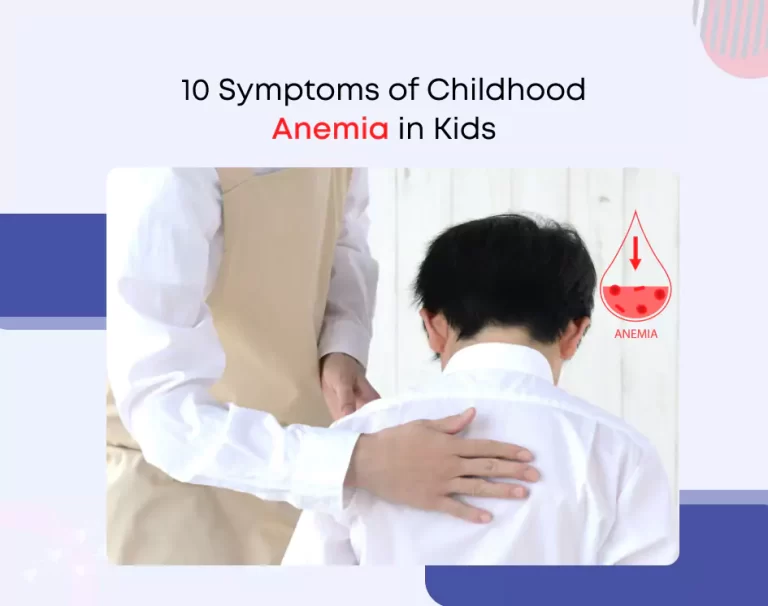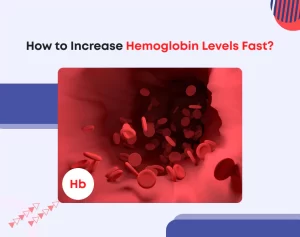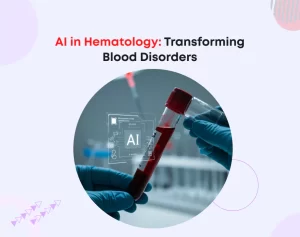
10 Symptoms of Childhood Anemia in Kids
Anemia in children is a condition where they lack enough healthy red blood cells to carry adequate oxygen to their body’s tissues. This can lead to various health issues, affecting their growth, energy levels, and overall well-being. Childhood anemia is more common than many parents realize, and it’s essential to recognize its symptoms early. By understanding the signs, caregivers can seek timely medical intervention, ensuring better health outcomes for their children. This blog will delve into ten symptoms of childhood anemia, helping parents and guardians stay informed and proactive about their child’s health.
10 Ways to Identify Childhood Anemia in Kids
Here are the key signs to look out for to identify childhood anemia and ensure your child’s health and well-being:
1. Pale Skin
One of the most noticeable symptoms of anemia in children is pale skin. This happens because there are fewer red blood cells to give the skin its rosy colour. Signs to look for:
- General Paleness: The child’s skin appears lighter than usual.
- Pale Lips and Gums: Check if their lips and gums are less pink.
- Pale Fingernails: Notice if the nails lack their usual colour.
If a child’s skin remains pale even after playing outside or physical activity, it may indicate anemia.
2. Fatigue and Weakness
Children with anemia often feel tired and weak. This is due to the lack of oxygen reaching their muscles and tissues. Signs to look for:
- Constant Tiredness: The child seems tired even after adequate sleep.
- Lack of Energy: They avoid physical activities and prefer to rest.
- Weakness: The child may have trouble lifting objects or engaging in play.
If a child frequently complains of tiredness and avoids playing, it could be a sign of anemia.
3. Shortness of Breath
Anemic children may experience shortness of breath due to inadequate oxygen supply in their blood. Signs to look for:
- Breathing Difficulty: The child finds it hard to breathe during activities.
- Rapid Breathing: Their breathing rate is faster than normal.
- Frequent Pauses: The child takes frequent breaks during play.
If a child struggles to catch their breath easily, it may indicate anemia.
4. Irritability
Anemia can affect a child’s mood, making them more irritable and cranky. Signs to look for:
- Frequent Mood Swings: The child has sudden changes in mood.
- Easily Upset: They get upset over small things.
- Unusual Crankiness: The child seems crankier than usual.
If a child is more irritable than normal, it could be due to anemia.
5. Rapid Heartbeat
The heart works harder to pump more blood to compensate for the lack of oxygen in anaemic children. Signs to look for:
- Fast Pulse: The child’s heart rate is faster than normal.
- Palpitations: They may feel their heart racing.
- Chest Discomfort: The child complains of chest pain.
If a child’s heartbeat is consistently fast, it could be a symptom of anemia.
6. Poor Appetite
Anemia can affect a child’s appetite, leading to reduced food intake. Signs to look for:
- Loss of Interest in Food: The child is not interested in eating.
- Eating Less: They eat smaller portions than usual.
- Skipping Meals: The child frequently skips meals.
If a child consistently shows a lack of interest in food, it may indicate anemia.
7. Headaches
Children with anemia may suffer from frequent headaches due to reduced oxygen flow to the brain. Signs to look for:
- Frequent Headaches: The child complains of headaches often.
- Head Pain After Activity: Headaches occur after physical activities.
- Persistent Pain: The headaches last for a long time.
If a child frequently complains of headaches, it could be a sign of anemia.
8. Difficulty Concentrating
Anemic children often have trouble focusing and concentrating on tasks. Signs to look for:
- Poor Focus: The child has difficulty paying attention.
- Daydreaming: They appear to be lost in thought frequently.
- Struggling with Tasks: The child struggles with schoolwork or other activities.
If a child has trouble concentrating, it could be a symptom of anemia.
9. Cold Hands and Feet
Poor blood circulation in anemic children can lead to cold hands and feet. Signs to look for:
- Cold Touch: The child’s hands and feet feel cold.
- Blotchy Skin: Their extremities may appear blotchy or pale.
- Complaints of Cold: The child frequently says they feel cold.
If a child has consistently cold hands and feet, it could be due to anaemia.
10. Slow Growth and Development
Anemia can impact a child’s physical and mental development. Signs to look for:
- Delayed Milestones: The child reaches developmental milestones later than peers.
- Stunted Growth: They grow slower than other children their age.
- Learning Difficulties: The child struggles with learning new things.
If a child shows signs of slow growth and development, it may be a symptom of anemia.
Preventing Childhood Anemia in Kids
Ensuring your child receives the right nutrients and that regular medical care is essential for preventing anaemia. Here’s how to prevent childhood anemia in kids:
Balanced Diet
A diet rich in iron, vitamins, and minerals is essential for preventing anemia. Foods like lean meats, beans, fortified cereals, and leafy greens should be included in a child’s diet.
Iron Supplements
In some cases, dietary intake may not be sufficient to meet the child’s iron needs. A healthcare provider may recommend iron supplements to boost iron levels.
Regular Check-Ups
Routine health check-ups can help detect anemia early. Blood tests can determine if a child has low haemoglobin levels and needs further evaluation.
Healthy Eating Habits
Encouraging healthy eating habits from a young age helps ensure children get the necessary nutrients. Avoiding junk food and promoting balanced meals can make a significant difference.
Seek Medical Help
If you notice any of the symptoms mentioned, it’s important to consult a pediatric hematologist. Early diagnosis and treatment can prevent complications and improve your child’s quality of life.
By maintaining a balanced diet and regular check-ups, you can help prevent childhood anaemia and support your child’s healthy development.
Winding Up
Recognizing the symptoms of anemia in children is crucial for timely intervention. Parents and caregivers should be vigilant and seek medical advice if they notice these signs. Early detection and treatment can help children lead healthier and more active lives. Regular check-ups and a balanced diet rich in iron can prevent and manage anaemia effectively. By staying informed, caregivers can ensure the well-being of their children.






